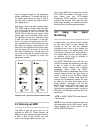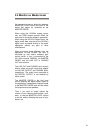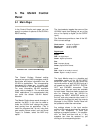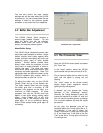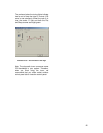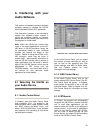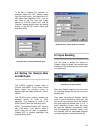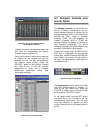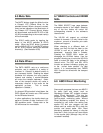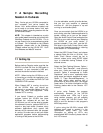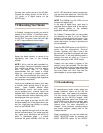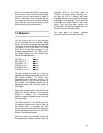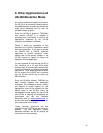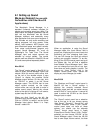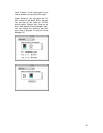
26
6.5 Mute/Solo
The MUTE buttons toggle the Mute function
in Cubasis’ VST Channel Mixer for the
selected channel. When a channel is muted,
there are two indications: the Mute button in
the Cubasis VST Channel Mixer’s display
will be activated, and the MUTE LED on the
US-224 corresponding to the muted track(s)
will be illuminated.
The SOLO switch works by toggling the
status of the MUTE switches to SOLO
mode. When the SOLO button is pressed
and the SOLO LED is lit, the MUTE buttons
act as SOLO buttons, soloing the selected
channel(s). (See illustration 6.06)
6.6 Data Wheel
The DATA WHEEL acts as a continuous
controller, and is capable of a variety of
functions. In Cubasis, its default function is
as a transport shuttle. Rotating the wheel
clockwise will advance the song position
forward, and rotating it counter-clockwise
will move the transport backward. (Note:
Use of the transport shuttle will cause a
momentary drop-out in the audio as the
application re-syncs. This is normal
operation in Cubasis.)
If a channel SELect switch is held down, the
DATA Wheel will function as a PAN control
for the SELected channel.
In other applications, the shuttle wheel can
perform a number of other functions in US-
428 emulation mode. Please refer to the
US-428 manual for more details.
6.7 BANK Controls and FADER
NULL
The BANK SELECT keys page between
successive banks of four faders. Selecting
any of the four faders will control the
corresponding channel in the software’s
internal mixer.
The US-224 will support an unlimited
number of channels. It is only limited to the
maximum amount of channels your audio
software will support.
When changing to a different bank of
faders, you may find that the fader on the
US-224 is now out of position with the
associated channel’s fader in Cubasis.
Pressing the FADER NULL button will
disengage the US-224’s faders from the
program, allowing you to move the US-224’s
fader to match the fader in the software’s
internal mixer. The REC and SEL LED’s
function as up/down indicators, guiding you
to the correct fader position. For best
results, it is recommended that FADER
NULL function be utilized with the transport
stopped.
6.8 ASIO2 Direct Monitoring
Some audio programs that can use ASIO 2
for audio input and output, such as
Steinberg’s Cubase VST, support a feature
called “Direct Monitoring.” This lets the
program’s user interface control hardware
input-to-output monitoring paths. Without
Direct Monitoring enabled, the latency is
controlled by your buffer size setting (see
section 5.2) and your program can add
effects such as reverb and EQ in both the
monitor and record paths. With Direct
Monitoring enabled the latency is ultra-low
(less than 1.5ms), but you can’t hear effects
in the monitor path (although they will be
recorded if enabled).



